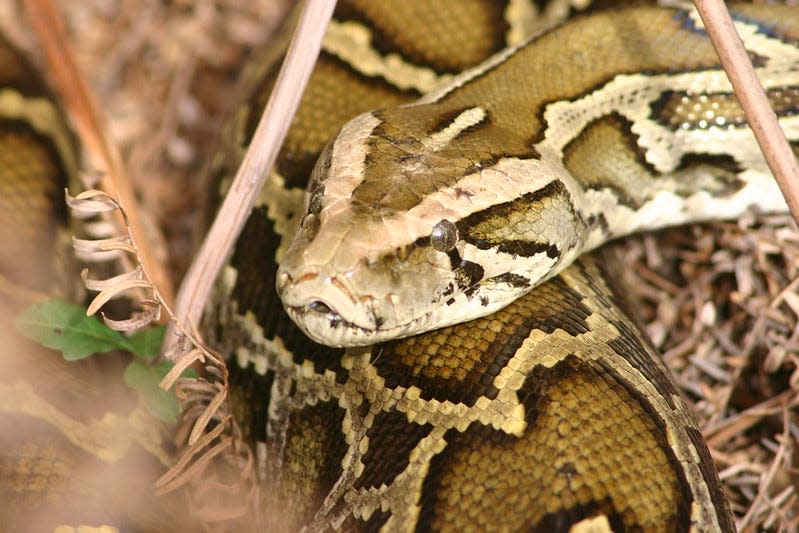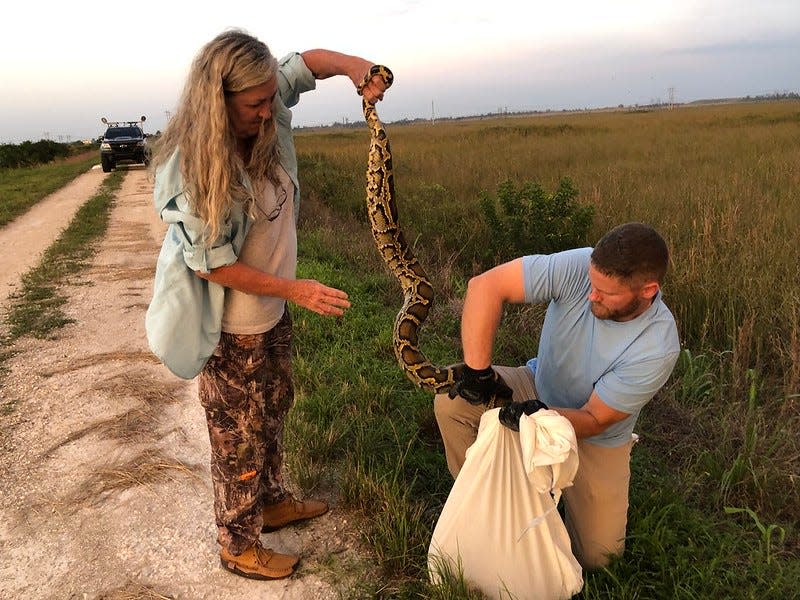Most common invasive species in Fort Myers and Naples: Here's what to look for
While Florida has a ton of gorgeous wildlife and plantlife, it also has thousands of non-native species of plants and animals.
These species may seem harmless from the outside, but they can destroy an entire ecosystem over time.
So which plant and animal species are invasive in Southwest Florida? Here's everything you need to know.
What is an invasive species?
Non-native species are plants, animals, and organisms that live in an area they aren't naturally found in. Species can also be classified as invasive if their introduction to an area will cause environmental or human health harm.
The terms "invasive" and "non-native" cannot be used interchangeably though. There's a ton of non-native species that aren't harmful to an environment. For example, cows are not native to North America, but their introduction is considered helpful.
How do invasive species spread?
Invasive species are spread primarily through human activities, but the spread isn't always intended. These species can spread through water, wood, and accidental release.
Plants that humans use as decor or for personal use can become invasive after being exposed to the wild. Invasive animals can spread after someone releases an unwanted pet into the wild.

Why are invasive species dangerous?
Invasive species can threaten native species by competing for resources and altering the native habitat.
When you take a species out of its native habitat, it'll fight to survive in the new one ― making whatever altercations it can. This in turn negatively impacts native species that can only survive in certain conditions.
Invasive species also hunt native species, causing some to go extinct.

What kinds of invasive species do we have in Naples and Fort Myers?
Two of the most common invasive species in Naples and Fort Myers are cane toads and Burmese pythons. But the Florida Fish and Wildlife Conservation Commission constantly works on containing these invasive species.
Cane toads are invasive to Florida. The FWC says they're native to South America, Mexico, Central America and parts of Texas.
These toads are poisonous to most animals that try to bite or eat them. Pets that come into contact with cane toads are at a high risk of death if they aren't treated quickly.
Cane toads aren't protected in Florida, besides anti-cruelty law, meaning you have to euthanize them humanely.
The toads multiply quickly, so watch out for them this summer.
Burmese pythons were added to Florida's prohibited species list in 2021. The FWC says they're native to India, lower China, the Malay Peninsula and a few islands of the East Indies.
These large snakes are predators of several mammals, birds, and reptiles. The pythons can consume meals equivalent to 100% their body mass.
Burmese pythons have few predators because of how large they are. Because of this, the pythons are able to prey on smaller native Florida species with virtually no threat. For example, these snakes have eaten endangered Key Largo wood rats.
Burmese pythons also pose a threat to human and pet safety. These snakes can prey on pets like cats and dogs.
This invasive species cannot be kept as a pet in Florida.
If you see a Burmese python, take a photo, mark your location, and call the FWC at (888) 483-4681.
What measures are being taken to fight invasive species locally?
The FWC focuses on removing Burmese pythons from endangered ecosystems. The organization also prioritizes community education about how to safely remove and humanely kill invasive species.
The Conservancy of Southwest Florida also works toward containing invasive species around our area.
The Conservancy researches and removes Burmese pythons from Southwest Florida with help from biologist Ian Bartoszek. Since 2013, he and his team have captured and removed over 20,000 pounds of python from the area.
Captured pythons are humanely euthanized, then used for research and data in the Conservancy's invasive species lab.
This article originally appeared on Naples Daily News: Burmese pythons and cane toads among the most common invasive species

